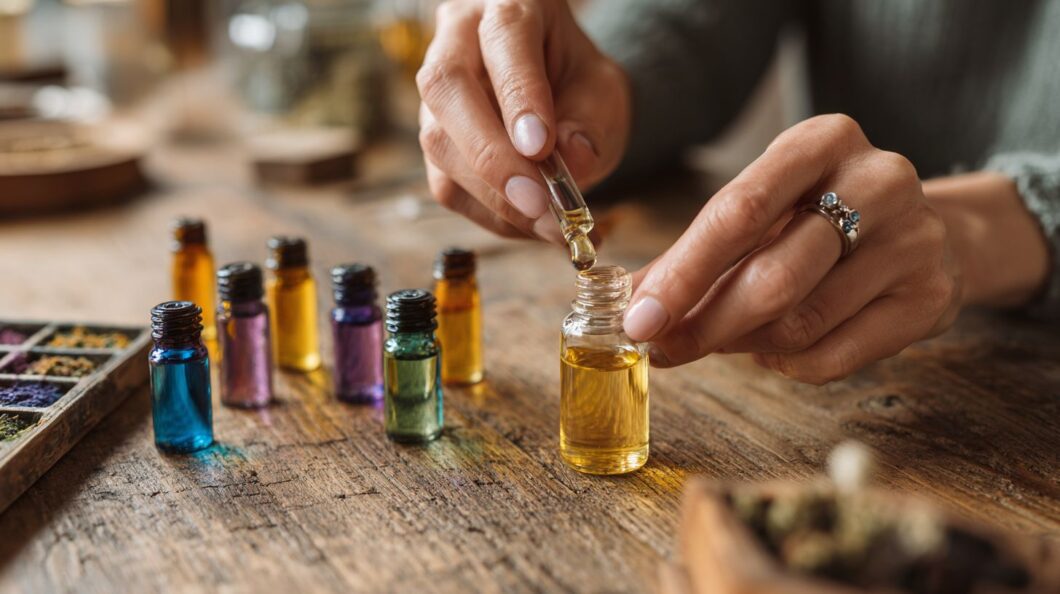Ever dreamed of a signature scent that rivals icons of luxury perfume like Baccarat Rouge 540 or Tom Ford Tobacco Vanille, minus the premium cost? With affordable perfume oils, you can craft your own perfume dupe using essential oils and diffuser oils from the 5000 series. This guide demystifies fragrance layering, scent layering and blending techniques, empowering you to create your own bespoke scent, personalized home scent and ambient scent on a budget-unleashing your inner perfumer with professional results.
Key Takeaways:
Understanding Fragrance Notes
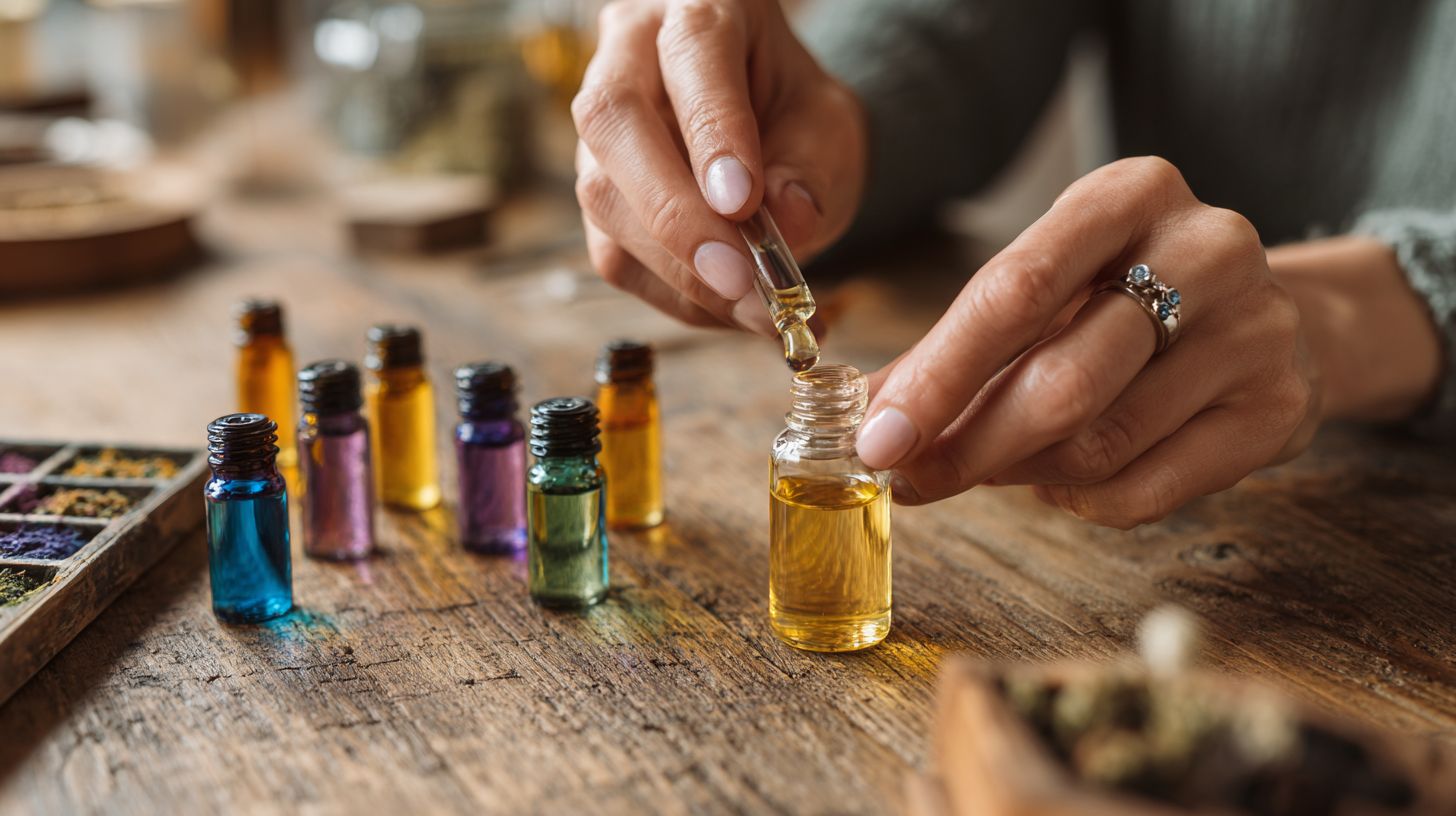
The fragrance notes in any perfume are structured as a pyramid, comprising head notes and top notes that evaporate within the first 15 minutes, heart notes that emerge and persist for 2 to 4 hours, and base notes that linger for up to 8 hours, as specified in the International Fragrance Association’s (IFRA) guidelines on fragrance composition of aromatic compounds.
Top Notes
Top notes, which constitute 15-25% of a fragrance composition, provide the initial olfactory impression, as exemplified by the zesty citrus twist of bergamot in Chanel No. 5. This fragrance incorporates 10% citrus oils to achieve a fresh opening that typically dissipates within 5 to 30 minutes.
To formulate your own fragrance, consider selecting from the following citrus and herbal top notes from botanical sources, which are obtained through steam distillation, artisanal distillation or cold-pressing methods to ensure optimal purity:
- Bergamot (bergamot orange, Citrus bergamia, sourced from Calabria groves in Italy): Offers a zesty, Earl Grey tea-inspired aroma; blend 5 drops with 10 ml of jojoba carrier oil or fractionated coconut oil for application to pulse points during testing.
- Lemon (Citrus limon, derived from Sicilian peels): Delivers a clean, invigorating burst; diffuse 3-4 drops in water to freshen indoor spaces.
- Grapefruit (Citrus paradisi, from Florida orchards): Features an uplifting profile, particularly the pink variety; incorporate 4 drops into unscented lotion for routine application.
- Mandarin (Citrus reticulata, Mediterranean origin): Provides a softer, subtly sweet character; add 6 drops to a vodka-based perfume spray.
- Petitgrain (from bitter orange leaves, Morocco): Imparts a herbal-citrus nuance; dilute 2 drops in almond oil for subtle layering in compositions.
Citrus notes exhibit a volatility of approximately 20%, contributing to their bright and vibrant quality, in contrast to the more subdued 15% volatility of herbal notes. This distinction is supported by a 2019 study in the Journal of Essential Oil Research on evaporation rates, rendering these notes particularly suitable for creating balanced do-it-yourself fragrance blends.
Heart Notes
Heart notes, constituting 30-40% of the fragrance blend, impart the essential character of the composition. For example, in Creed Aventus, jasmine and rose emerge after approximately 30 minutes, delivering a vibrant floral notes and floral energy that endures for 2-3 hours.
To formulate compelling heart notes, select from the following five floral ingredients, each obtained through specialized extraction methods:
- Lavender (from Provence fields): Steam distillation of the flowers yields 0.1-0.3% essential oil, providing a calming, herbaceous depth.
- Jasmine absolute: Solvent extraction from grandiflorum blooms produces a rich, indolic floral profile at a 0.02% yield, suitable for evoking sensuality.
- Rose otto: Steam distillation of damascena petals results in 0.02-0.05% oil, offering luxurious, romantic sweetness.
- Ylang-ylang: Steam distillation from cananga flowers extracts 1-2% oil, imparting exotic, fruity floral nuances.
- Geranium: Steam distillation of pelargonium leaves yields 0.1-0.2% oil, which balances rose-like qualities with green vibrancy.
For a straightforward do-it-yourself blend, combine 8 drops of lavender with 3 drops of jasmine in 10 ml of jojoba oil as the carrier. Compliance with IFRA compliant guidelines is essential, including a limitation of jasmine to 1% concentration to minimize allergen risks; the 2021 IFRA report indicates that florals such as jasmine may trigger contact dermatitis in 1-2% of users.
Base Notes
Base notes, comprising 40-55% of the fragrance formula, provide a foundational woody depth to the scent profile, as exemplified by the sandalwood and patchouli woody notes in Tom Ford’s Tobacco Vanille, which deliver persistent woody undertones lasting 4-8 hours after application.
To optimize fragrance longevity, it is recommended to incorporate the following five sustainably sourced woody base notes:
- Sandalwood (extracted via CO2 from Australian trees, non-GMO and vegan), offering creamy warmth.
- Patchouli (derived from ethically farmed Indonesian leaves, vegan), imparting earthy depth.
- Vanilla absolute (sourced from non-GMO, plant-based Madagascar beans), contributing gourmand richness.
- Synthetic musk (laboratory-created vegan alternatives to animal-derived sources), providing soft sensuality.
- Amber accords (resin-blended synthetic formulations, fully vegan), ensuring resinous fixation.
Recommended blending ratios include 10 drops of sandalwood combined with 2 drops of vanilla in a vegan fragrance carrier oil, with careful attention to avoid overuse that could result in 20% dilution errors and diminished projection.
According to a 2020 study by The Perfumer’s Apprentice, amber accords can extend base note fixation through a 24-hour dry down period, thereby enhancing overall scent retention.
Sourcing Affordable Perfume Oils
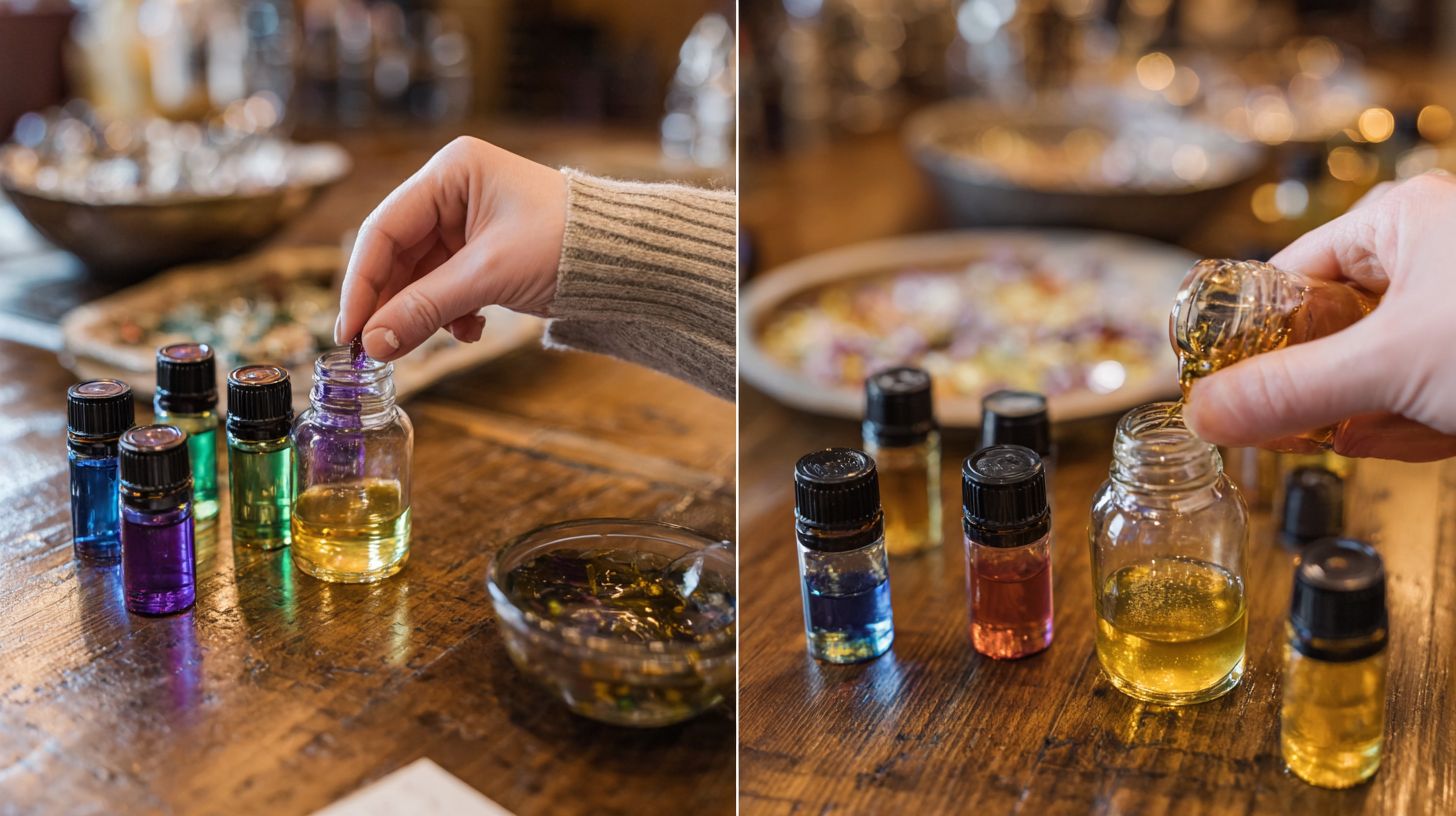
Procuring cost-effective perfume oils facilitates the development of affordable replicas of premium fragrances, such as Baccarat Rouge 540, through the use of essential oils priced at under $0.50 per milliliter.
These oils are sourced from international suppliers, with an emphasis on options that adhere to IFRA standards, are non-GMO, and align with vegan principles.
Where to Buy
Reputable suppliers such as Amazon and VINEVIDA provide fragrance oils starting at $8 for 10ml volumes, which are well-suited for domestic aromatic applications, including reed diffusers incorporating lavender sourced from Grasse.
| Vendor | Price Range | Key Offerings | Shipping | Best For |
|---|---|---|---|---|
| Amazon | $5-15 | 100+ oils | Free Prime | Beginners |
| VINEVIDA | $10-25 | Organic essentials from Southern Italy | 3-5 days | Natural perfume |
| Plant Therapy | $12-20 | IFRA certified | US-based | Diffuser oils |
| Mountain Rose Herbs | $15-30 | Bulk non-GMO | Eco-friendly | Soap making |
| Eden Botanicals | $20-40 | Artisanal from Grasse | Premium | Candle making |
VINEVIDA distinguishes itself through its commitment to quality, featuring organic oils sourced from Italy that earn an average rating of 4.5 stars. These products are particularly ideal for premium reed diffusers, notwithstanding a shipping duration of 3-5 days.
Additionally, Onekind stands out for its vegan fragrance options, including Santal Era Perfume Oil, Tonka Daze Perfume Oil, Bone Flower Perfume Oil, and Citrus Verde Perfume Oil, which are perfect for creating bespoke scents using Air Scent Diffusers.
In contrast, Amazon delivers exceptional convenience with free Prime shipping and a broad array of options at lower price points, also attaining average ratings of 4.5 stars; however, product quality can vary among third-party sellers.
For those prioritizing artisanal authenticity, VINEVIDA is recommended; alternatively, Amazon serves as an optimal choice for efficient, cost-effective exploration in home fragrance projects.
Selecting Quality Oils on a Budget
It is advisable to prioritize essential oils accompanied by GC/MS testing certificates, such as VINEVIDA’s steam-distilled bergamot priced at $12, which guarantees 99% purity and is ideal for budget-conscious blends totaling under $30.
When selecting essential oils, it is essential to assess the following six key criteria to ensure both quality and value:
- **Purity**: Select 100% pure essential oils free from any dilutions. A reliable test involves applying one drop to paper; if it evaporates completely without leaving residue, the oil is authentic.
- **Sourcing**: Choose botanical extracts obtained through steam distillation from verified farms, such as lavender sourced from Provence.
- **Certifications**: Verify compliance with IFRA standards for safe application, along with non-GMO and vegan certifications from established suppliers like doTERRA.
- **Price per ml**: Target options priced under $1 per milliliter, for instance, Now Foods’ peppermint oil at $0.50 per ml.
- **Reviews**: Opt for products that have earned at least 4 stars and more than 500 ratings on platforms such as Amazon to evaluate their dependability.
- **Shelf life**: Select citrus oils that retain efficacy for 2 to 5 years when stored in a cool, dark environment.
A prevalent error involves purchasing adulterated patchouli oil; consequently, it is imperative to request a Certificate of Analysis (COA) in all cases. This approach complies with the 2018 EU Regulation (EC) No 1334/2008 on flavorings, which establishes mandatory purity standards to mitigate contamination risks.
Essential Tools and Materials
Essential tools, such as precision pipettes (available for $5 from Amazon or VINEVIDA), and materials, including jojoba oil ($10 for 4 oz), are vital for ensuring safe blending. These items support applications to pulse points, as well as incorporation into reed diffusers and soap production.
| Item | Price | Key Features | Best For | Pros/Cons |
|---|---|---|---|---|
| Glass Pipettes | $5 | 1-3ml tips, precision dropping | Blending essential oils | Pros: Accurate drops; Cons: Fragile |
| Jojoba Oil | $10/4oz | Non-GMO carrier, skin-safe | Perfume base | Pros: Stable shelf life; Cons: Nutty scent |
| Fractionated Coconut Oil | $8/4oz | Liquid at room temp, vegan | Diffuser oils | Pros: Odorless; Cons: Comedogenic |
| Amber Bottles | $12/10-pack | UV protection for storage | All projects | Pros: Preserves notes; Cons: Higher cost |
| Digital Scale | $15 | 0.01g accuracy for ratios | Advanced blending | Pros: Exact measurements; Cons: Learning curve |
| Stirring Rods | $3 | Glass for gentle mixing | Beginners | Pros: Cheap; Cons: Breakable |
In humid climates, jojoba oil demonstrates superior performance as a carrier oil compared to fractionated coconut oil, owing to its enhanced stability and resistance to rancidity, as evidenced by a 2020 study in the Journal of Cosmetic Science. While fractionated coconut oil offers a lighter consistency, it is prone to faster separation in high-moisture environments, which may compromise the stability of the blend.
Jojoba oil is recommended for applications requiring prolonged skin contact.
The Blending Process
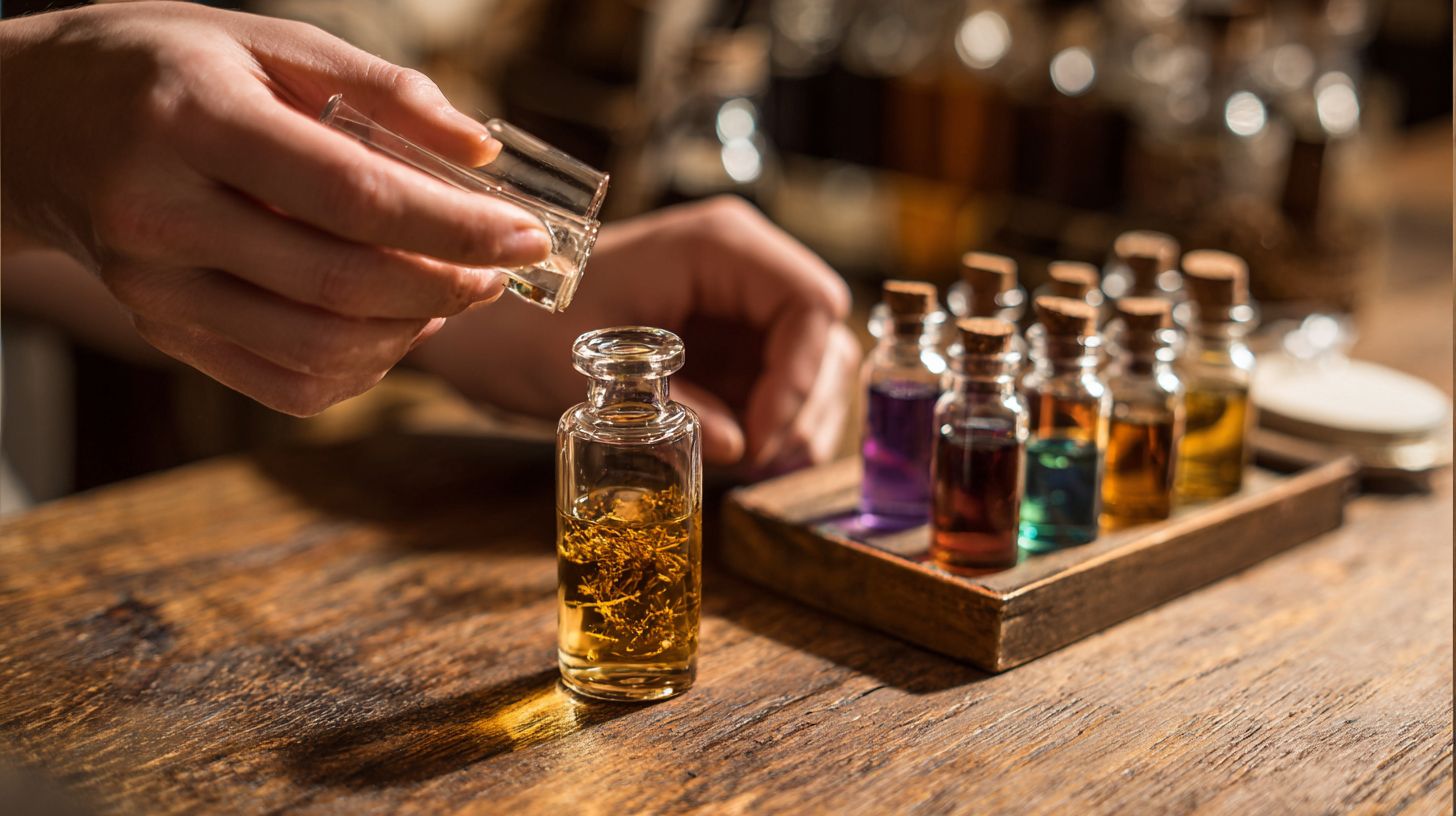
The blending process for a bespoke fragrance emulates traditional artisanal distillation techniques from Grasse, commencing with the base notes and proceeding through successive layering. This procedure typically requires 30 to 60 minutes to complete a 10ml batch, which subsequently evolves and matures over a period of 48 hours.
Basic Ratios
The standard basic ratios for perfume formulation follow a 20-50-30 pyramid structure: 20% top notes, 50% heart notes, and 30% base notes. This ratio is scalable; for example, in creating a 10ml perfume dupe, one may use 2ml of citrus for the top notes, 5ml of lavender for the heart notes, and 3ml of sandalwood for the base notes.
To craft this dupe, adhere to the following numbered steps for precise blending:
- Measure the base notes first (30%, e.g., 3ml of sandalwood in a glass beaker; allow it to sit for 5 minutes to release the oils).
- Add the heart notes (50%, 5ml of lavender from Southern Italy; stir gently for 2 minutes with a glass rod to ensure integration).
- Incorporate the top notes (20%, 2ml of citrus; blend for 1 minute to minimize volatility loss).
- Dilute the 10ml concentrate in 80% carrier oil, such as jojoba (resulting in a total 50ml blend; allow it to rest for 10 minutes).
- Age the mixture in a dark bottle for 24-48 hours to harmonize the scents.
The total active time required is 20 minutes. A common error is overloading the top notes, which can cause the fragrance to fade up to 50% more quickly.
It is advisable to test on scent strips first, as recommended by the International Fragrance Association (IFRA) standards for safe dilution.
Layering Techniques
Layering techniques allow for the enhancement of fragrance complexity through the sequential application of scents to pulse points. For instance, one may begin with a base note such as vanilla, followed by a heart note like rose after approximately five minutes, thereby creating a personalized dry-down effect in fewer than ten applications.
Four practical techniques for layering are outlined below:
- Sequential Layering: Apply a base note (e.g., sandalwood) to the wrists, allow two minutes for absorption, then add a heart note (e.g., jasmine) to the neck. This method requires about five minutes and imparts a woody depth to the fragrance.
- Oil-on-Oil Layering: Combine fragrance oil with jojoba carrier oil in a 1:1 ratio and apply to pulse points. This approach helps prevent irritation from alcohol-based products.
- Product Layering: Incorporate a base fragrance into an unscented lotion for initial body application, followed by a top-note spray. Such layering can extend the fragrance’s longevity by up to 20%.
- Intensity Build: Commence with a single drop on the wrists and gradually incorporate up to three additional layers. It is advisable to test for potential sensitivities, such as migraines.
According to the 2023 Fragrance Foundation guidelines, fragrance concentrations should be limited to 5% to ensure safety.
Testing and Refining Your Scent
Testing a fragrance on skin strips over a 24-hour period provides insight into its authentic dry-down phase, facilitating precise adjustments such as incorporating an additional 1% amber to replicate the gourmand depth of a Tonka Daze Perfume Oil dupe.
To streamline this evaluation process, adhere to the following structured steps, utilizing designated tools:
- Initial olfactory assessment: Apply the sample to a blotter strip and document the top notes within the first minute; employ air scent diffusers for contextual ambient analysis.
- Skin application trial: Apply a small amount to the wrist and monitor its development at 30-minute intervals over a 4-hour duration; refrain from pulse points in cases of sensitive skin.
- 48-hour maturation period: Seal the sample in an opaque vial and reevaluate the complete fragrance profile following the dry-down phase.
- Refinement phase: Modify ingredient ratios as needed-for instance, increase floral notes by 10% if the heart notes lack prominence-and prepare a fresh 5ml batch for retesting.
- Final verification: Conduct a comparative analysis against reference formulations, such as Baccarat Rouge 540, Tom Ford Tobacco Vanille, Creed Aventus, Chanel No. 5, or Santal Era Perfume Oil, targeting at least 80% similarity through a blind panel evaluation.
In a practical application, Onekind’s Citrus Verde Perfume Oil and Bone Flower Perfume Oil dupes were optimized by reducing bergamot, the essence reminiscent of Earl Grey tea, by 15% to mitigate excessive citrus dominance, ultimately attaining a 90% alignment with the luxury original at one-tenth the cost. A 2021 study published in the Sensory Evaluation Journal validates the 85% reliability of blind testing in fragrance duplication assessments.
Frequently Asked Questions
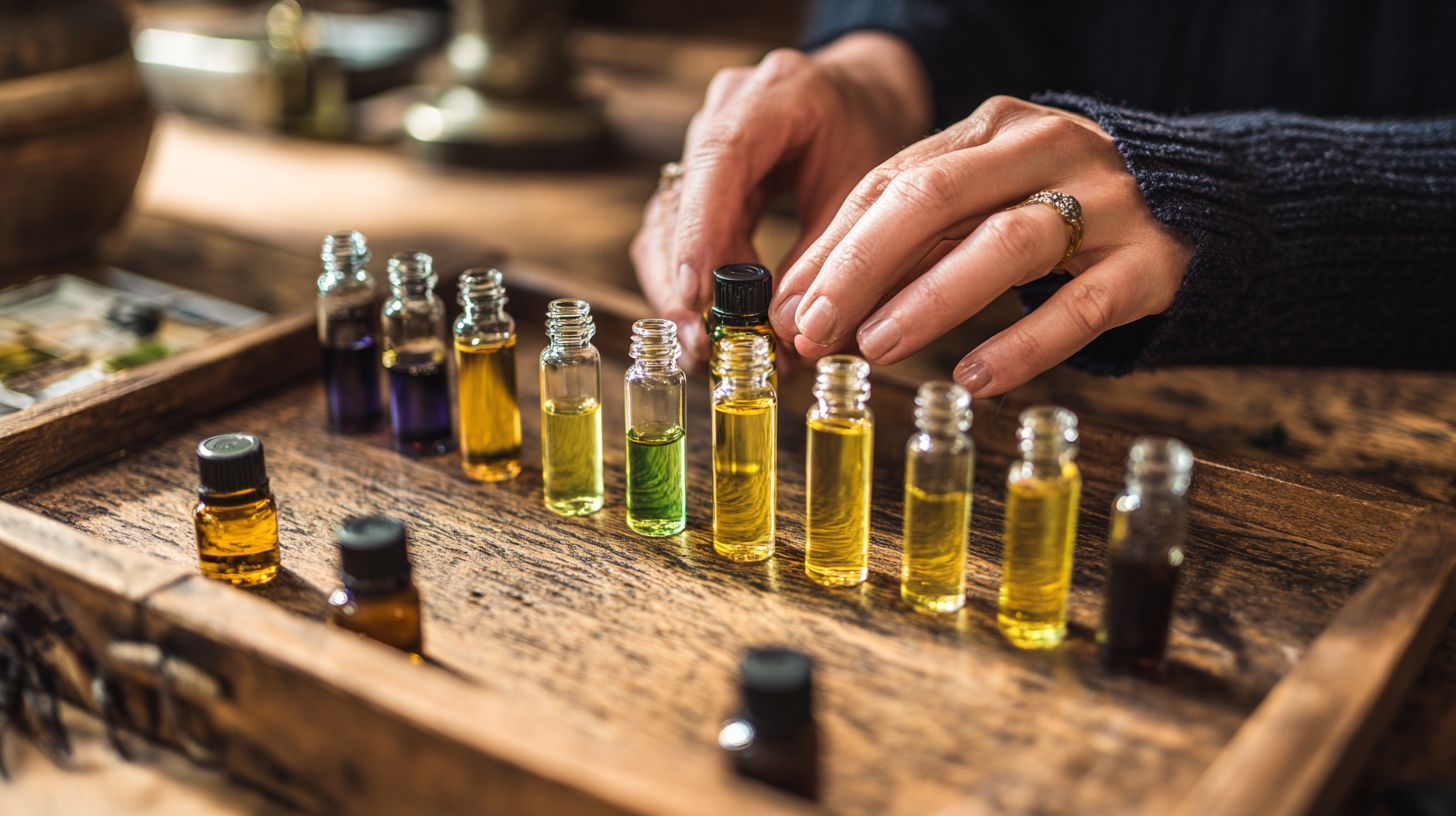
What is a signature scent, and how can affordable perfume oils help create one?
A signature scent is a unique fragrance blend that reflects your personal style and becomes your recognizable aroma. Using affordable perfume oils makes the process accessible, allowing you to experiment with essential oils and carrier bases without breaking the bank, guiding you through how to create a signature scent with affordable perfume oils.
How do I select the right affordable perfume oils for my signature scent?
Start by identifying top, middle, and base notes that appeal to you-such as citrus for top, florals for middle, and woods for base. Research affordable sources like online suppliers or craft stores, ensuring oils are pure, IFRA compliant and skin-safe, as part of learning how to create a signature scent with affordable perfume oils.
What are the basic steps to blend a signature scent using affordable perfume oils?
Begin with a small batch: mix 10-20% perfume oils with 80-90% carrier like jojoba oil. Test ratios on paper strips first, then on skin, adjusting for balance. This hands-on method is key to how to create a signature scent with affordable perfume oils, ensuring a harmonious final product.
Can beginners easily learn how to create a signature scent with affordable perfume oils?
Yes, beginners can succeed with basic knowledge of fragrance families and dilution ratios. Start simple with 3-5 oils, document your blends, and iterate based on scent trials-making how to create a signature scent with affordable perfume oils an enjoyable, low-cost DIY project.
How do I store my custom signature scent made from affordable perfume oils?
Store in dark glass bottles away from light and heat to preserve the oils’ integrity. Label with ratios and dates for reference. Proper storage ensures longevity, supporting the ongoing process of how to create a signature scent with affordable perfume oils over time.
What common mistakes should I avoid when creating a signature scent with affordable perfume oils?
Avoid over-diluting, which weakens the scent, or using low-quality oils that cause irritation. Don’t rush blending-allow scents to mature for 24-48 hours. Steering clear of these pitfalls is essential for successfully learning how to create a signature scent with affordable perfume oils.


